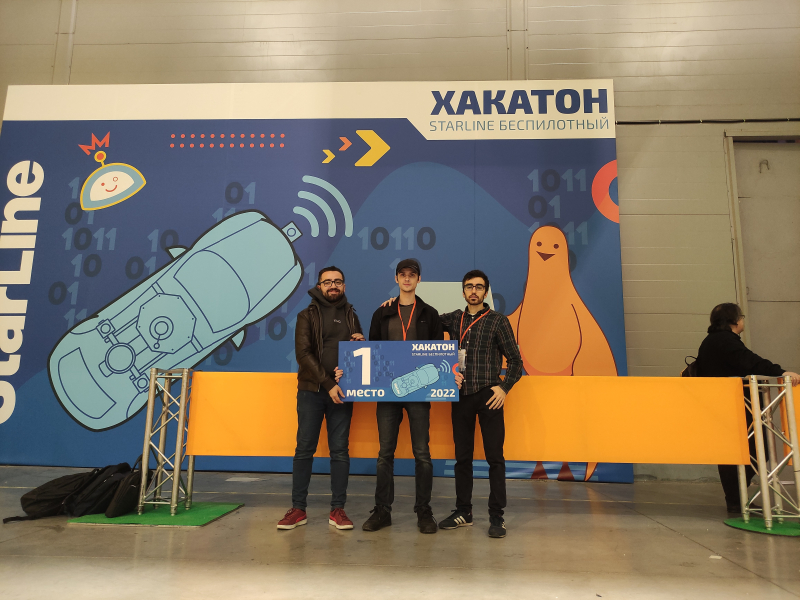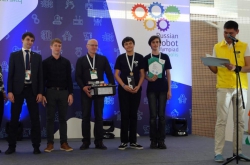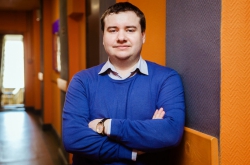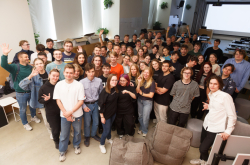The annual RoboFinist festival, which has taken place in Russia since 2014, is one of the largest robotics events. This year, the competition was held at DAA District in St. Petersburg on October 19-23. Among the festival’s partners and co-organizers is scientific and production association StarLine, a manufacturer of smart solutions for car security systems.
StarLine organized its third annual hackathon for automotive engineers and AI developers. The competition took place in two stages: first, all teams underwent a selection to prove their competencies. This year, their task for this round was to present a simulation of a robot explorer in a city without humans. The participants needed to write a program for the robot that would help it find and recognize all QR-codes hidden in the city. Only six out of ten teams succeeded.
The second stage lasted five days, during which the teams worked on a complex task – they needed to develop a computer vision algorithm that would allow the robot to not only map a maze in real time, navigate it, and overcome all the obstacles, but also find and identify another robot stuck in the maze, which was hidden in a place unknown to participants.
After that, the robot programmed by the team had to lead its lost counterpart out of the maze. This was hard to do, given that all the sensors and cameras of the second robot were switched off. Both the organizers and the participants agreed that this year’s hackathon was the hardest among all competitions held at RoboFinist. Only one out of six teams have fully completed the task. Three teams managed to navigate the maze, but only team BE2RLab (Master's student Andrey Penkovsky and PhD students Malik Mohrat and Jaafar Mahmud) was able to identify and help the other robot.
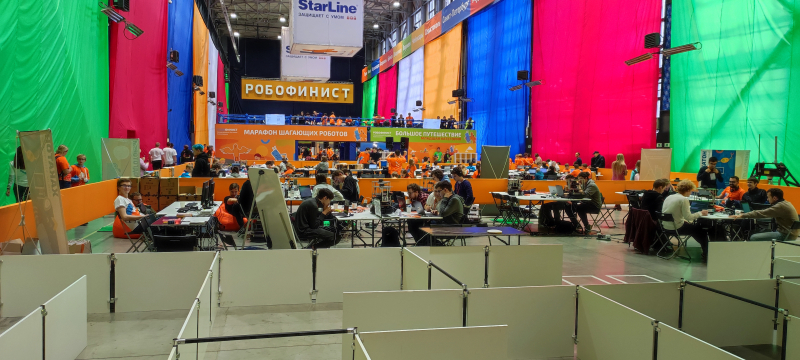
Hacktahon by StarLine at RoboFinist 2022. Credit: Nikolai Dema
According to Andrey Penkovsky, a member of the winning team and a second-year Master’s student at the Robotics and Artificial Intelligence program, the navigation part was more or less doable, but making the blind robot follow the required trajectory was a puzzler.
“We did a sly move and used ARUCO markers for detection. They helped us see where the robots were located regarding one another. Then we performed simple kinematic transformations using coordinates and calculated the speed at which the second robot should move to get close to the first one. There was a wireless network between them, so the first robot transmitted calculations to the second one remotely – this was our first trick. In order to detect an ARUCO marker, the first robot should always have visual contact with the second one, which is impossible when one of them is behind. That’s why we thought about the permitted (by the hackathon’s rules) sensor variations and simply turned the camera around. And that was our second trick,” says Andrey Penkovsky.
Malik Mohrat, another member of the BE2RLab team and a PhD student at the Faculty of Control Systems and Robotics, says that the limited time added to the challenge – they needed to think very quickly, so the last bits of code and the final tests were completed in the very last minutes. He believes that the experience earned while working at ITMO’s Laboratory for Biomechatronics and Energy-Efficient Robotics helped the team win.
“This victory became possible thanks to our experience of working with mobile robots and autonomous navigation systems, as well as working on projects as part of the M-platform Next-Gen Cyberphysical Systems, including those conducted jointly with Sberbank’s Robotics Laboratory. Determination and persistence were also of help – considering our competencies and skills, we were almost certain that we’ll do great. Other teams did an awesome job, too, and were noted by the jury. I think they simply didn’t have enough time to complete the task,” says Malik Mohrat.
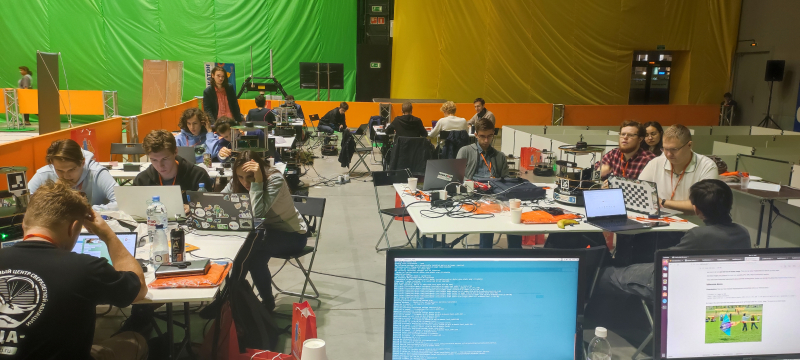
Hacktahon by StarLine at RoboFinist 2022. Credit: Nikolai Dema
According to Sergey Kolyubin, the head of the International Laboratory for Biomechatronics and Energy-Efficient Robotics and the M-platform Next-Gen Cyberphysical Systems, victories at such competitions demonstrate a high level of students’ expertise. The Corporate Master’s program held jointly with Sberbank is designed according to the problem-oriented approach. Furthermore, the projects and skills developed at the program were chosen together with experts from Sberbank’s Robotics Laboratory. The curriculum includes machine learning, computer vision, and control of complex and multiagent robotic systems. The goal of any hackathon is not to compete with others, but to overcome the problem, face the challenge, and check your ability to solve a hard task in a limited time. The university, in its turn, aims to not only provide students with knowledge but also help them practice.
“Driveless cars and autonomous robots are occupying the minds of scientists from all over the world. It’s not only about calculations – it’s a large market with generous investments. Moreover, often even major technological companies fail to form efficient engineering and research teams, so collaborations between companies and universities, as well as startups, are in the lead. This means that it’s not all about the money – it’s about talent, creativity, and human resources. I think the key role of a university in technological development is to help promising young specialists grow,” says Sergey Kolyubin.
StarLine has been cooperating with the Faculty of Control Systems and Robotics in different fields. For two years in a row, the company and the faculty have jointly organized the Robotics track of the national competition I Am a Professional. Moreover, each year students from ITMO complete internships at the company, while the university’s graduates get hired permanently to work on driveless transportation projects.
